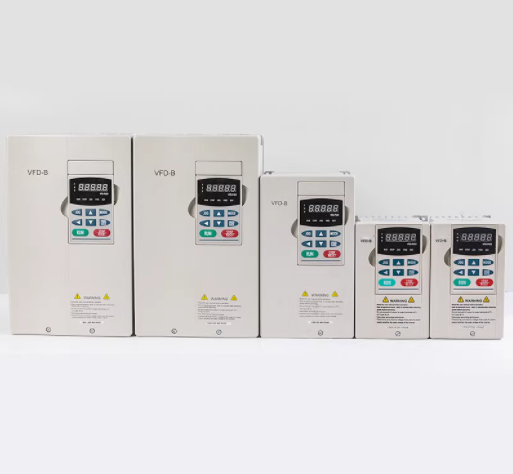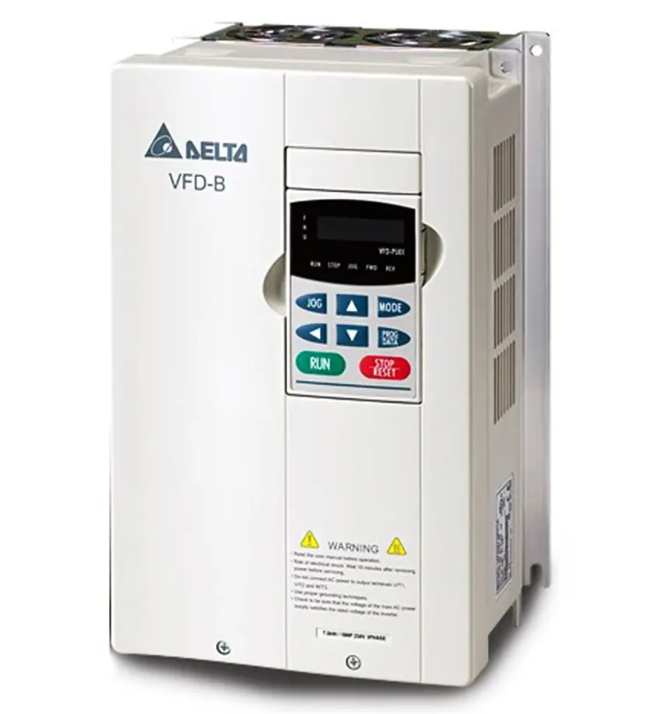The working principle of Delta inverter
Sep 26, 2024
Brand Introduction
Delta Group is currently the world's leading manufacturer of switched power supply products and holds a world-class leadership position in multiple product areas, including providing comprehensive solutions for power management, video displays, industrial automation, network communication products, and products related to renewable energy.
Energy saving principle
1. Variable frequency energy-saving
The energy-saving of frequency converters is mainly manifested in the application of fans and water pumps. In order to ensure the reliability of production, various production machinery are designed with a certain amount of surplus when equipped with power drives. When the motor cannot operate at full load, in addition to meeting the power drive requirements, the excess torque increases the consumption of active power, resulting in the waste of electrical energy. The traditional speed regulation method for equipment such as fans and pumps is to adjust the air and water supply volume by adjusting the opening of the inlet or outlet baffles and valves. The input power is high, and a large amount of energy is consumed in the interception process of the baffles and valves. When using variable frequency speed regulation, if the flow rate requirement is reduced, the requirement can be met by reducing the speed of the pump or fan.
According to fluid mechanics, P (power)=Q (flow rate) × H (pressure), the flow rate Q is proportional to the power of the rotational speed N, the pressure H is proportional to the square of the rotational speed N, and the power P is proportional to the cube of the rotational speed N. If the efficiency of the water pump is constant, when the required flow rate decreases, the rotational speed N can decrease proportionally, and at this time, the shaft output power P decreases in a cubic relationship. The power consumption of the water pump motor is approximately proportional to the rotational speed. When the required flow rate Q decreases, the output frequency of the frequency converter can be adjusted to proportionally reduce the motor speed n. At this point, the power P of the electric motor will significantly decrease according to a cubic relationship, saving 40% to 50% of energy compared to adjusting baffles and valves, thus achieving the goal of energy conservation.
For example, a centrifugal pump motor with a power of 55 kW consumes 28.16 kW of electricity and saves 48.8% of electricity when the speed drops to 4/5 of the original speed. When the speed drops to 1/2 of the original speed, the power consumption is 6.875 kW, saving 87.5% of electricity.
2. Power factor compensation for energy saving
Reactive power not only increases line loss and equipment heating, but more importantly, the decrease in power factor leads to a reduction in active power in the power grid. A large amount of reactive energy is consumed in the lines, resulting in low equipment efficiency and serious waste. After using a variable frequency speed regulation device, the effect of the internal filtering capacitor of the frequency converter reduces reactive power loss and increases the active power of the power grid.
3. Soft start energy-saving
Hard starting of motors causes serious impact on the power grid, and also demands excessive capacity from the grid. The high current and vibration generated during starting can cause significant damage to baffles and valves, which is extremely detrimental to the service life of equipment and pipelines. After using the frequency conversion energy-saving device, the soft start function of the frequency converter will start the starting current from zero, and the maximum value will not exceed the rated current, reducing the impact on the power grid and the requirements for power supply capacity, and extending the service life of equipment and valves. Saved equipment maintenance costs.
Usage environment
1. The ambient temperature ranges from -10 ℃ to+40 ℃. When removing the dust sticker on the upper end, it can be used for temperatures ranging from -10 ℃ to+50 ℃
2. Prevent rainwater from dripping or humid environments
3. Avoid direct sunlight exposure
4. Prevent oil mist and salt erosion
5. Prevent corrosive liquids and gases
6. Prevent dust, cotton wool, and metal shavings from entering
7. Stay away from radioactive and flammable materials
8. Prevent electromagnetic interference (welding machine, power machine)
9. Install away from any heating equipment
10. Prevent vibration (punch press). If unavoidable, please install shock-absorbing pads to reduce vibration
11. When installing several frequency converters in the control panel, please pay attention to their placement for heat dissipation. Additionally, please install a cooling fan to keep the temperature around the frequency converters below 50 ℃.
12. Please advance the front of the frequency converter and keep the top facing upwards during installation to facilitate heat dissipation
13. The installation space must comply with the following regulations: If installed inside the disk or in the surrounding environment, the dust cover of the inverter can be removed to facilitate heat dissipation and ventilation of the inverter.




